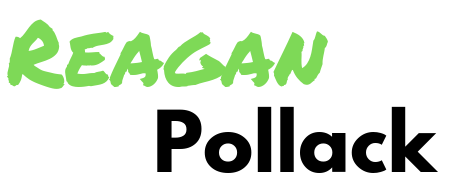
The Future of Work, disrupted by Design Thinking
“We see our customers as invited guests to a party, and we are the hosts. It’s our job every day to make every important aspect of the customer experience a little bit better.”
~ Jeff Bezos
What exactly is a customer experience, and when does it start and end? If we take a moment to zoom out from simply identifying one point in the cycle from customer acquisition through purchase, we can see that the experience actually goes beyond the scope of our traditional thinking of what constitutes one ‘touch point’, cycle or interaction.
In today’s hyper connected world, one could argue that the customer’s experience might begin by seeing other users interacting with a product out in the real world, or in the research phase when a customer is simply browsing for a product, solution or improved experience.
Moreover, one could say, that for an experience to get truly ‘disrupted’, a way of doing things must be present for a continuous amount of time and become ‘the adopted norm’ for how something is experienced, used, purchased, consumed, and understood in terms of moving parts, players, and context.
Disruptions come in a few different flavors however, firstly, one where an incumbent solution (product, service, experience, tool, method, mindset) has been the popularized norm for many years, to the point of ubiquity, and then a new faster, cheaper, easier, more effective, safer, more enjoyable, or better packaged alternative comes along to offer that same user group a new choice. For example, the Winchester hard disk drive was disrupted by the 3.5” hard disk drive, which was better suited for placement in smaller laptops and computers as opposed to larger mainframe and desktop computers, and companies like Conner Peripherals benefited from the hyper growth of such a niche market and macro trend.
Another version of disruption might be a shift in the approach, not necessarily the substitution of one product or service for another. This type of shift might be culturally fueled, strategic in nature, or simply a net product of the democratization of a technology or resource that once was controlled by a small group of companies or individuals. For example, working as an Uber Driver, or an Upwork for hire employee, or as a ‘power’ eBay or Etsy seller are cultural shifts and also strategic, because those systems once were not in place, and have now become “accepted” by society to produce additional discretionary income in a multitude of ways (aka the ‘side hustle’).
While my example below is not focused on re-designing the customer journey, I believe that in order to provide the best customer experience, it takes as many eyes and ears from within the organization to better understand the entire user cycle and journey, from all angles, to produce the best results. Design Thinking gives us tools to unlock golden insights that exponentially improves both our customer and employee experiences.
Putting industries that are ‘ripe’ for disruption through experience re-design aside for the moment, the future of work in general, actually is the sleeping giant that’s right under our noses, yet many fail to see how it can transform everything. While we spend most of our time looking to innovate and disrupt on the customer facing side, the actual structure and systems of many corporations remains the same as they were over 50 years ago.
For older generations, and a few subsequent ones prior, it was the goal to learn a trade, either from your parents or through higher education, and to quickly get an apprenticeship to galvanize those skills and apply them to the real world in a job that would take you 30-40 years through retirement. It was a one and done strategy.
As we look out on the horizon of how most companies are structured today, we see management caught in between trying to satisfy the old world models, and to appeal to the new wave of Millennial and Gen-Z workers with remote work, distributed workforces, virtual conferencing, “perks” like free coffee, gym memberships and catered lunches. Meanwhile, AI continues to grow in the background preparing to replace low level routinized work to improve margins and sharpen corporate competitive advantages.
Additionally, we still see similar old style models in HR recruitment (hiring/screening), employee compensation programs, skills matching to jobs, and creating work-life-balance for employees.
Employees on the one hand want certainty that they are hired for their future skills to be developed and future earning potential, but employers hire mainly based on paying x for those skills today, and earning y on them over z number of years. Additionally, employees remain hopeful that they will be rewarded greatly with salary raises without asking for it, however most companies use old legacy compensation plans that only review employees every few years and have very little compensation or incentive plan to not only enrich the lives of their employees, better leverage their hard skills, and motivate them to push the company higher.
When asked what motivates employees, many assume that salary is the #1 ranking factor, but actually, work-life-balance ranks in the top 3 of desired results. Additionally, the ability to have unique, personally rewarding work where employee input has a net output in the betterment of society is also in the top spot.
Companies might consider the need to better design their employee programs not solely around old world functionary groups like “Operations”, “Sales”, “Marketing”, “Customer Service”, but around mini projects that fully leverage employee’s developing skillsets and put back office workers face to face with customers. There are so many unknown skills and under leveraged potential within employees, that a percentage of work could be redefined as ‘design projects’ that rotate from one group to the next to see how they learn from them.
At Trader Joe’s, even though this is a non-tech example, they have their Hawaiian-shirt wearing employees rotate from job function every 2 hours – from bagger, to inventory re stocker, to cashier, each employee feels a renewed sense of purpose, and feels re-energized in their new mini-role every 120 minutes. No employee is above or under one another’s responsibilities, rather they all share in duties and move the ship forward.
According to Packaged Facts, Trader Joe’s attracts 10.5% of US adults as customers, compared with 6.3% for Whole Foods (defined by the number who shop there at least once a month). The 10-year compound annual growth rate in customer base for Trader Joe’s is 5.9%, compared to 4.9% for Whole Foods. Oct 10, 2017 (1)
Naturally, at Trader Joe’s, there are managers in place, called “Captains”, but at the store level, employees don’t fall into the trap of just being their name tag, rather they are a ‘crew member’ and as a crew, they work in harmony.
You can’t buy engagement from employees, but the pay at Trader Joe’s helps. Store managers, “captains” in Trader Joe’s parlance—the nautical titles are a holdover from Coulombe (newly promoted captains are commanders; assistant store managers are first mates)—can make in the low six figures, and full-time crew members can start in the $40,000 to $60,000 range. But on top of the pay, Trader Joe’s annually contributes 15.4% of employees’ gross income to tax-deferred retirement accounts. All of that can lead to a better customer experience. A ringing bell instead of an intercom signals that more help is needed at the registers. Registers don’t have conveyor belts or scales, and perishables are sold by unit instead of weight, speeding up checkout. Crew members aren’t told the margins on products, so placement decisions are made based not on profits but on what’s best for the shopper. Every employee works all aspects of the store, and if you ask where the roasted chestnuts are he’ll walk you over instead of just saying “aisle five.” Want to know what they taste like? He can probably tell you, and he might even open the bag on the spot for you to try.
Other companies can take a similar approach, allowing each employee to rotate to handle customer service phone calls (where a lot of the learning happens), to data entry (to understanding the relationships between inputs and outputs), to marketing, sales and operations. Through rotational design, employee’s unique insights through different lenses, fuels learning and a betterment of customer experiences. Naturally, certain knowledge based roles like accounting, finance, and technology may not benefit so much from this rotational re-design, but other customer facing roles just might learn faster, and be able to build better insights that drive and enhance customer experiences.
Who knows – a simple re-design today of our internal corporate structures, might actually enhance our customer relationships, drive employee retention, and fuel sustained growth.
*****
#HR #futureofwork #hiring #worklifebalance #recruitment #UX #designthinking
(1) https://www.foodnavigator-usa.com/Article/2017/10/10/Trader-Joe-s-is-most-at-risk-from-Whole-Foods-Amazon-Magid-expert
Photo credits: Photo by Alex Kotliarskyi and rawpixel, unsplash




Recent Comments